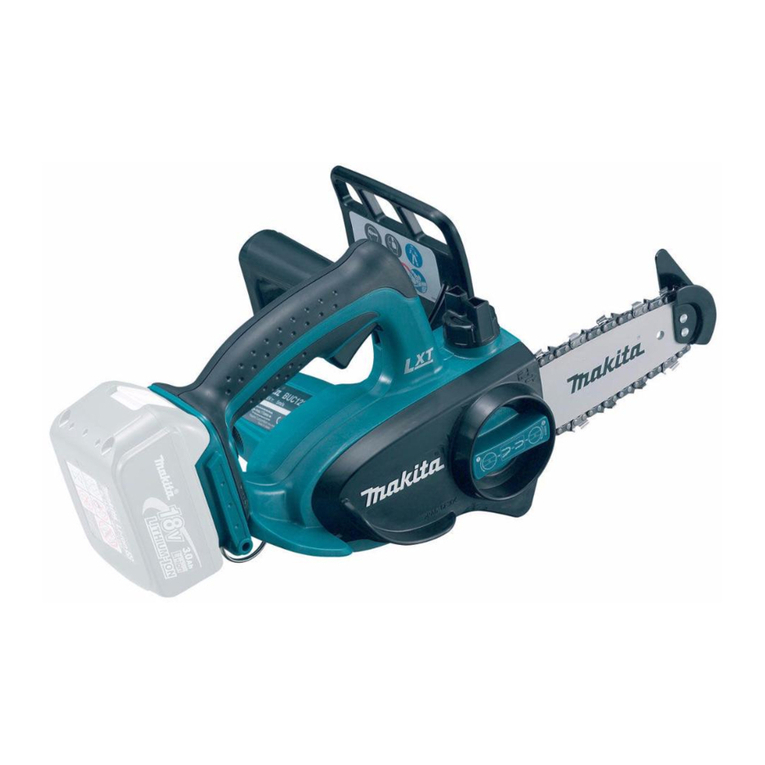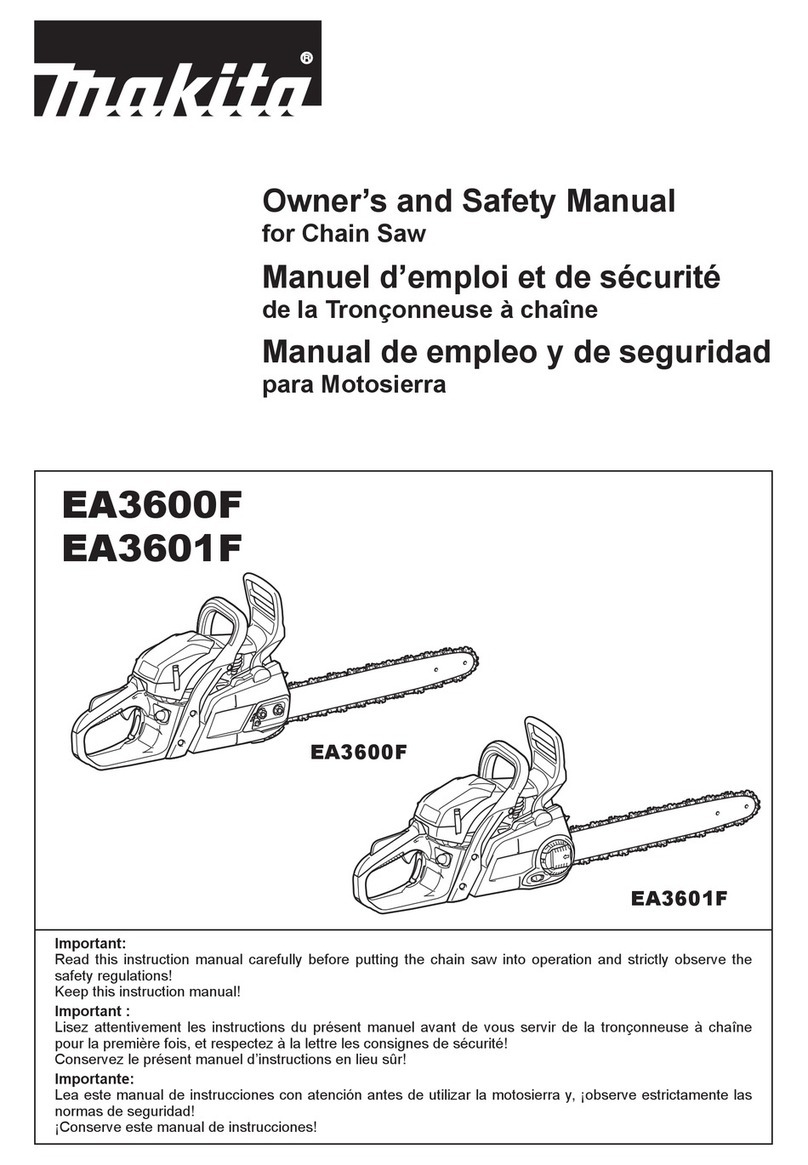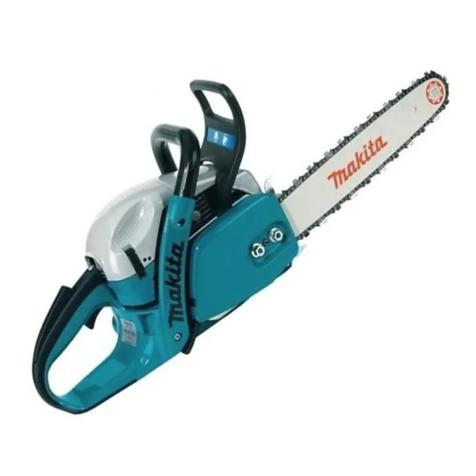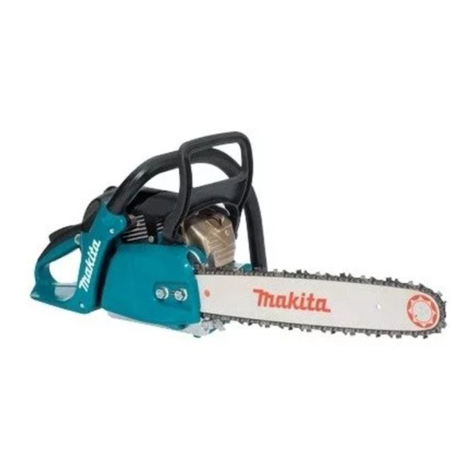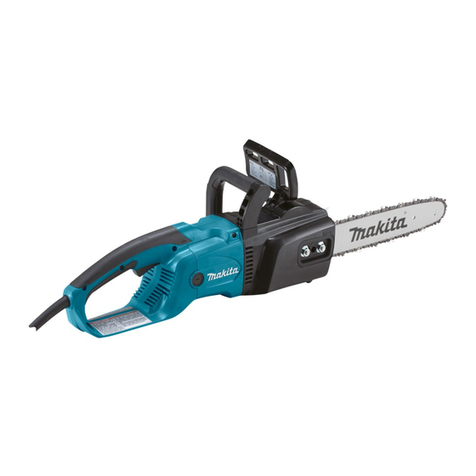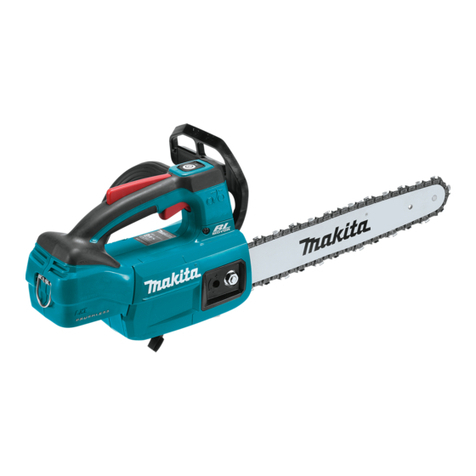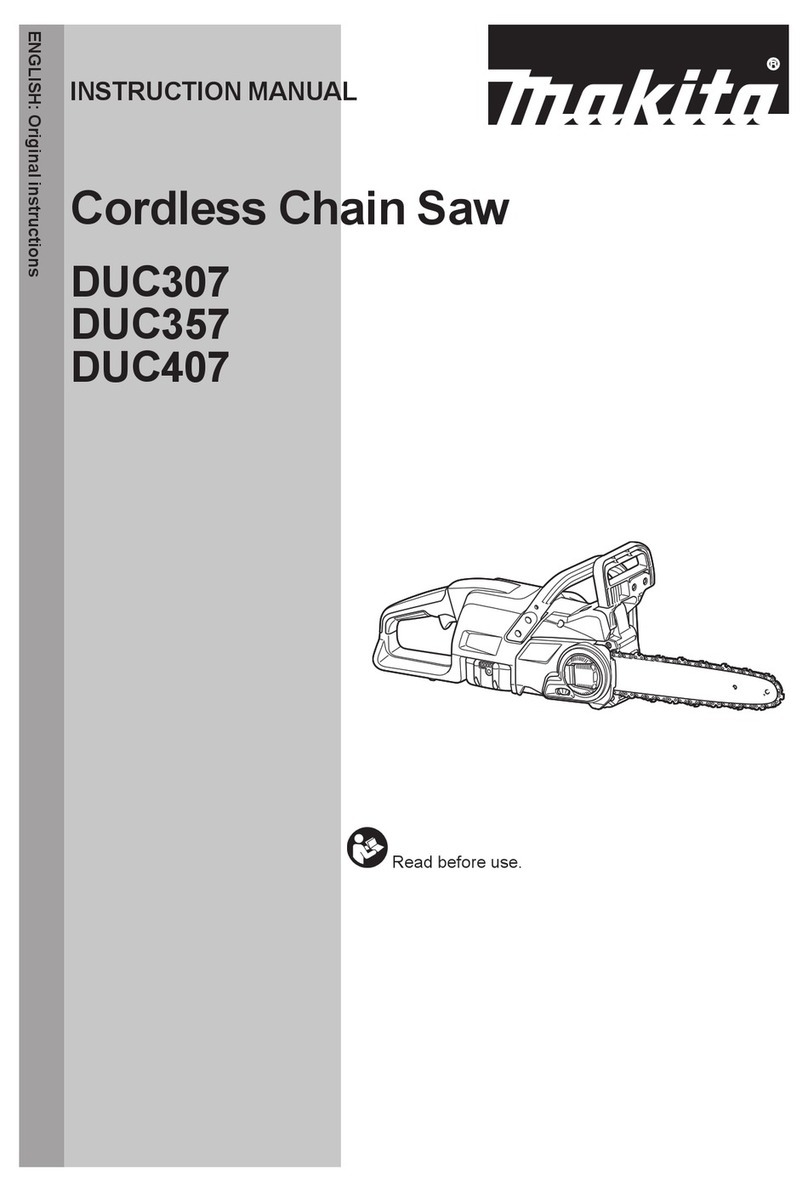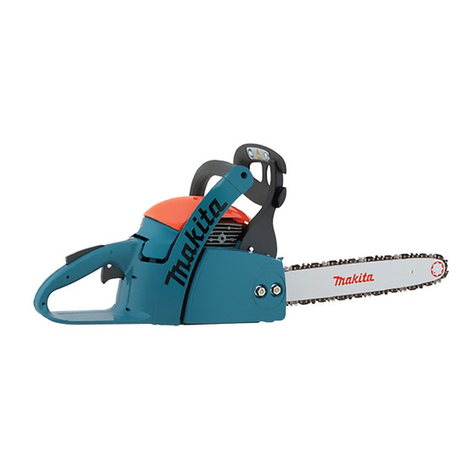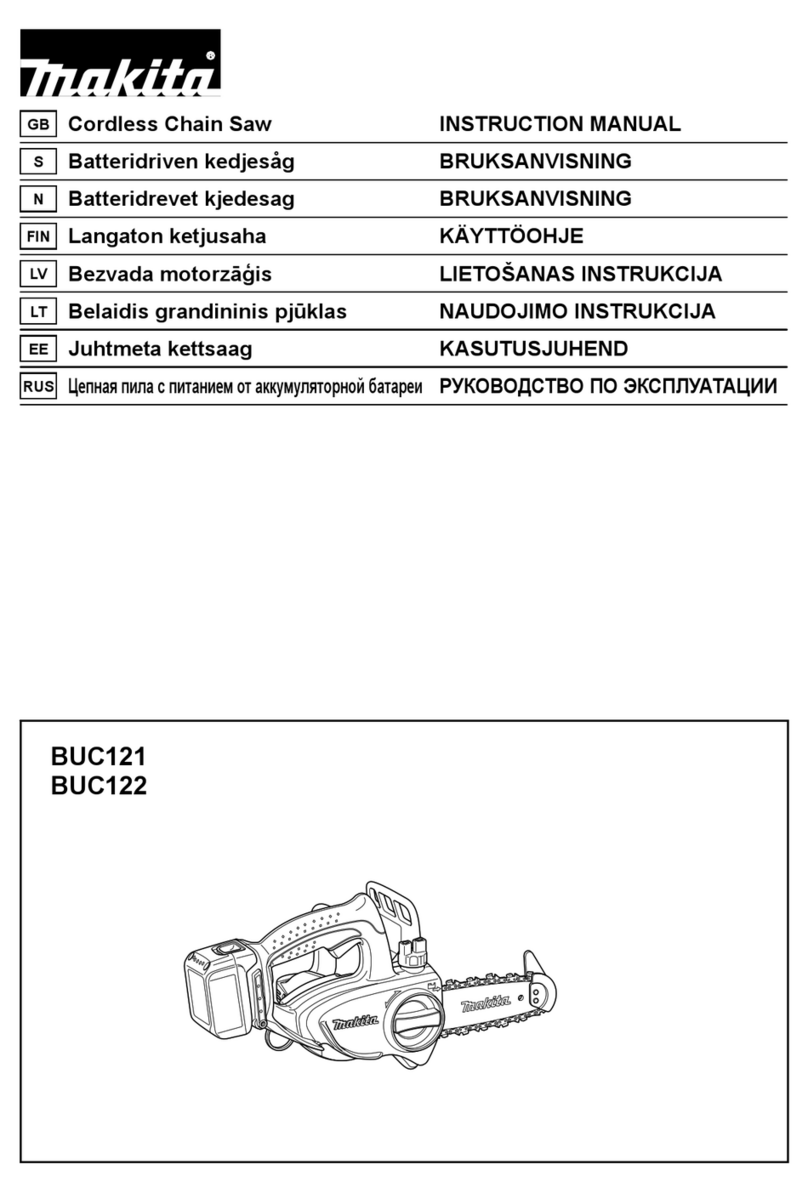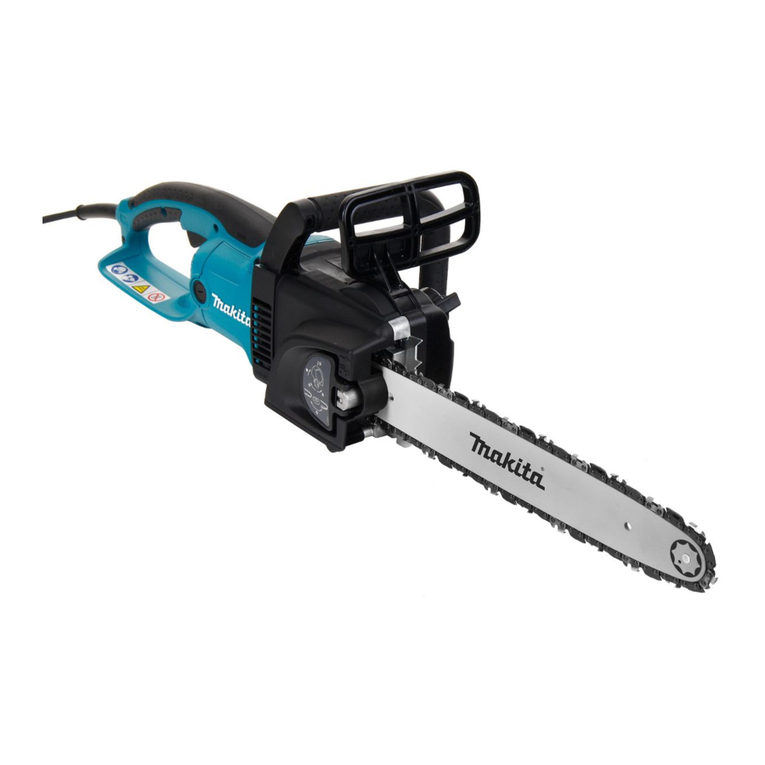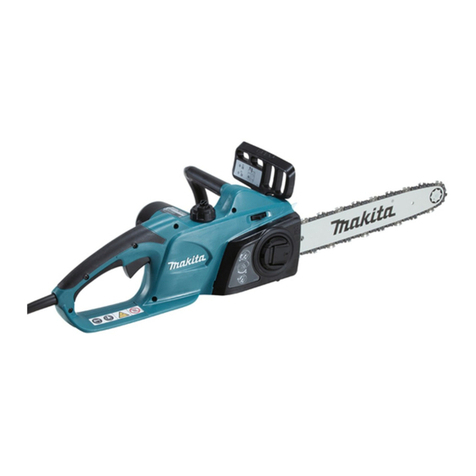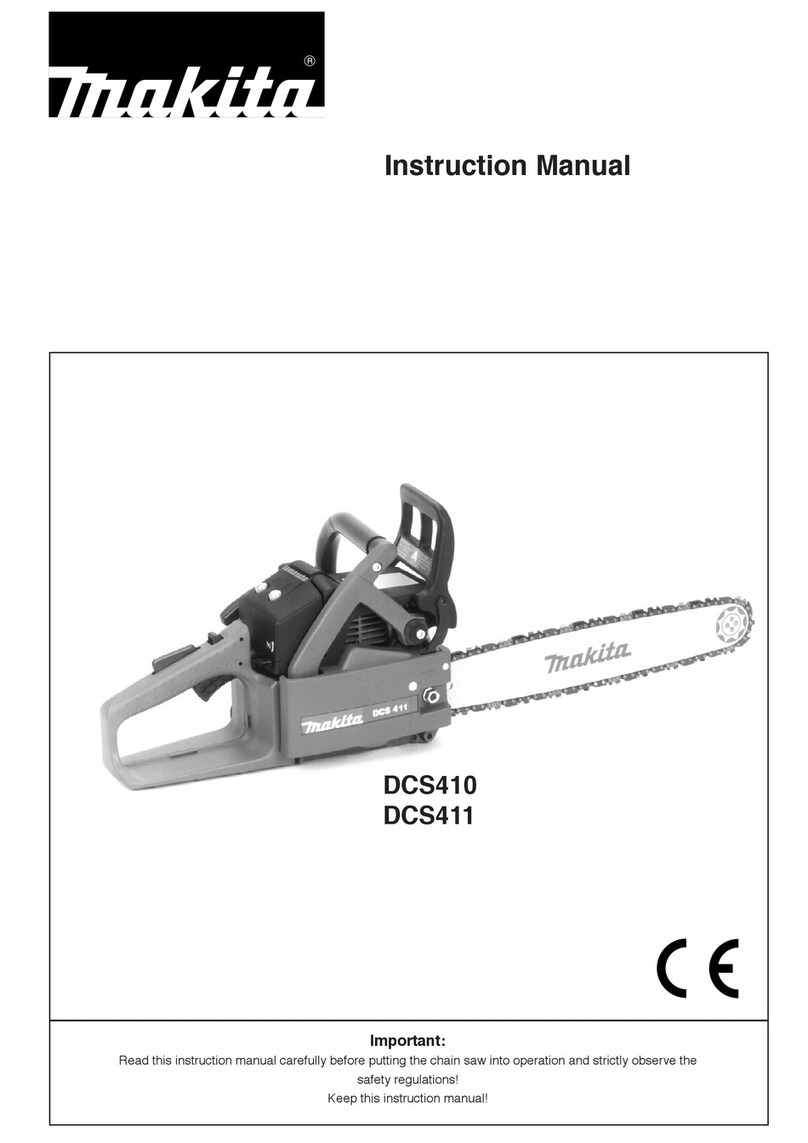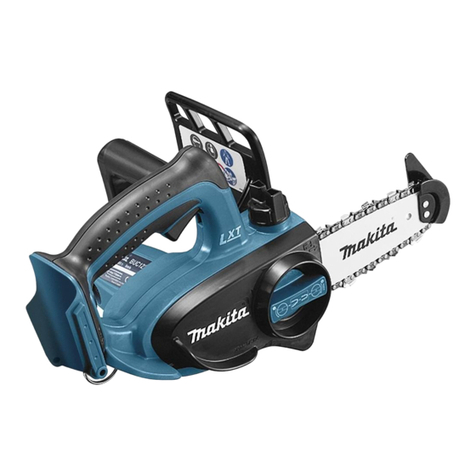
5
- Pay attention to the diameter of the extension cable. When
using a cable roll the cable should be completely wound off.
Use only extension cords that meet the specifications in
“Technical data”. If using the saw out of doors make sure that
the extension cord is approved for such use.
-Beforestartingworktheelectricchainsawmustbechecked
for perfect function and operating safety according to the
prescriptions.
Check especially the function of the chain brake, the correct
mountingoftheguidebar,thecorrectsharpeningandtightening
of the saw chain, the firm mounting of the sprocket guard, the
easy motion of the power switch, the function of the locking
button, the good mechanical condition of cable and plug and
the cleanliness and dryness of the handles.
- Put the electric chain saw only into operation if it is completely
assembled. Never use the electric chain saw when it is not
completely assembled.
- All protective installations and guard supplied with the chain
saw during operation.
- Makesurethattherearenochildrenorotherpersonswithinthe
workingrange.Alsopayattentiontoanyanimalsintheworking
vicinity (6).
- Before switching on the electric chain saw ensure that you
have a safe footing.
-When switching on the electric chain saw always hold it
withbothhands.Takethebackhandlewiththerighthandand
the tubular handle with the left hand. Hold the handles tightly
with your thumbs facing your fingers. The bar and chain must
indicate away from your body (7).
- Switchonthesawonlyinthemannerdescribedinthismanual.
Do not overload your saw. It will work better and more safely if
you use it within its intended performance range.
- Switch off the electric chain saw immediately if you observe a
change in its operating behavior.
CAUTION:
When releasing the power switch the chain keeps on
running for a short period of time (free-wheeling).
- Protect the power cord from heat, oil and sharp edges.
- If the cable is being damaged or cut, pull out the power supply
plug immediately.
- Ifthesawingdeviceishitbystones,nailsorotherhardobjects,
pull out the power supply plug and check the sawing device
immediately
-Pull out the power supply plug before checking the chain
tension, tightening the chain, replacing it or clearing
malfunctions.
- Whenstoppingworkorleavingtheelectricchainsawswitchoff
the chain saw and pull out the power supply plug. Put the
electricchainsawinasafelocationtopreventdangertoothers.
- For refilling the oil tank the power supply plug must be pulled
out. Do not smoke or light open fires.
- Avoid skin or eye contact with mineral oil products. Always
wear gloves when refilling the oil tank.
- Take care that no chain oil oozes into the soil (environmental
protection). Use an appropriate base.
- If oil has been spilt, clean the electric chain saw immediately.
Working behavior/method of working
- Do not work on your own. There must be someone around in
case of an emergency (within shouting distance).
- During sawing operation always hold the electric chain saw
with both hands. Thus you will be able to guide it safely.
- Only use the electric chain saw during good light and visibility
periods.Beawareofslipperyorwetareas,andoficeandsnow
(risk of slipping). The risk of slipping is extremely high when
working on recently peeled wood (bark).
- Never work on unstable surfaces. Make sure that there are no
obstaclesintheworkingarea,riskofstumbling.Alwaysensure
that you have a safe footing.
- Never saw above your shoulder height.
- Never saw while standing on a ladder.
- Never climb up into trees to perform sawing with the electric
chain saw.
- Never bend forward by far to perform sawing.
6
7
8
9
10
●device malfunction
●maintenance
●refill oil
●sharpen the saw chain
●stop
●transport
●
shutdown
